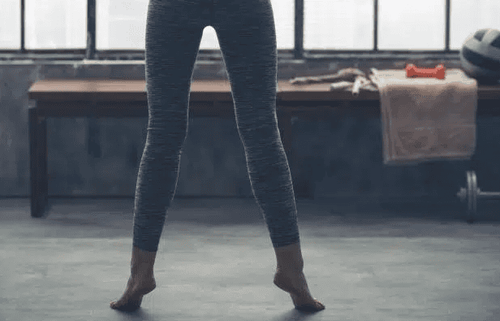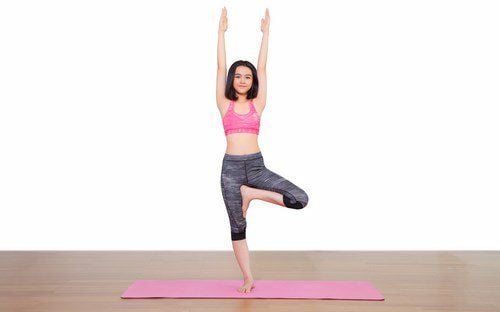This is an automatically translated article.
If you've committed to regular exercise, you'll likely sweat during your cardio sessions and feel a relatively efficient burn. However, balance training will become an important part of fitness that is often overlooked. Therefore, to promote long-term health, it is necessary to perform these exercises.1. Balance training
Balance exercises can help you keep your balance, in addition to this exercise also helps build muscle quite effectively. If you're an older adult, balance exercises are especially important because they can help you prevent falls and help you stay fit. You should practice balance with physical activity and strength training in your regular activity.Nearly any activity that keeps you steady and moving, such as walking, can help you maintain good balance. But specific exercises designed to strengthen your balance are very beneficial to include in your daily routine and can help improve your stability.
For example, balance on one foot when you are standing for a period of time at home or when you go out. Or, stand up from a sitting position without using your hands. Or try going for a short walk. You can also try tai chi, a range of motion training that can improve balance, stability, and reduce your odds of falling.
If you have serious balance problems or orthopedic conditions, you need your doctor's advice and approval before performing balance exercises.
According to the Centers for Disease Control and Prevention, more than 1 in 4 older adults fall each year. Balance training improves the body's ability to react quickly to missteps every day, thereby helping to prevent falls. During a workout, balance also helps you move more efficiently to improve performance and prevent injury.
Balance refers to the ability to stand upright and steady, whether you are standing, kneeling, sitting or squatting. Several sensory systems in your body contribute to good balance. Vision, inner ear, and joint receptors provide a sense of your body's position in space. The neuromuscular system synthesizes this information to give you the stability you need to keep your body upright, with the weight evenly distributed.

Các bài tập luyện cân bằng có thể giúp bạn giữ thăng bằng, ngoài ra bài tập này cũng giúp xây dựng cơ bắp khá hiệu quả
2. Ways to apply balance training
Balance exercises can train and strengthen your neuromuscular system and increase your stability. Here are some ways to incorporate balance activities into your daily routine:2.1. Changing your support base You can try standing with your feet closer together, walking by placing one foot directly in front of the other, or balancing on one foot.
Walking balance. Pretend you are on a balance bar and walk with one foot in front of the other while keeping your balance. Balancing on one foot any chance you get: watching a TV commercial, waiting for a bus, reading the news. You should look for opportunities or spare time every day to practice this exercise. 2.2. Changing your surface You stand on a pillow or carpet, foam cushion or plate, gradually moving towards less stable surfaces, such as: a balance ball, a downward (more stable) or upward (more stable) plane ( less stable). Stand with your feet close together or on one foot if you can. Take the risk of walking on variable terrain, such as a sandy beach or a hiking trail. 2.3. Close your eyes Try closing your eyes as you stand with your feet together, pretend to walk on a balance bar, balance on one foot, or walk on another surface Be careful during this exercise. practice and rely on a partner for support if needed.

Bạn hãy thử nhắm mắt lại khi bạn đứng bằng hai chân với nhau
2.5. Add Movement Elsewhere While standing on one leg, bring your arms into a T and perform small circular motions for 30 seconds. Then try circular motion in the opposite direction.
Incorporating balance training into your daily routine or exercise routine can be both easy and fun. These exercises should be tailored to your skill level. You should be challenged, but not so difficult to do them safely.
3. Trials
Try to incorporate balance exercises into your life for at least a few minutes a day, and start with these experiments.Practice standing on one leg like a flamingo for 45 seconds, then switch sides. If this is too easy, then try closing your eyes. Line up a few pillows end to end and walk across them. Assume you are on a balance bar. If this is too difficult, walk on a flat surface. Experiment with slowly turning your head to the side, then up and down as you're walking.

Bạn hãy tập đứng bằng một chân như chim hồng hạc trong 45 giây, sau đó đổi bên
Please dial HOTLINE for more information or register for an appointment HERE. Download MyVinmec app to make appointments faster and to manage your bookings easily.
Reference source: mayoclinic.org












